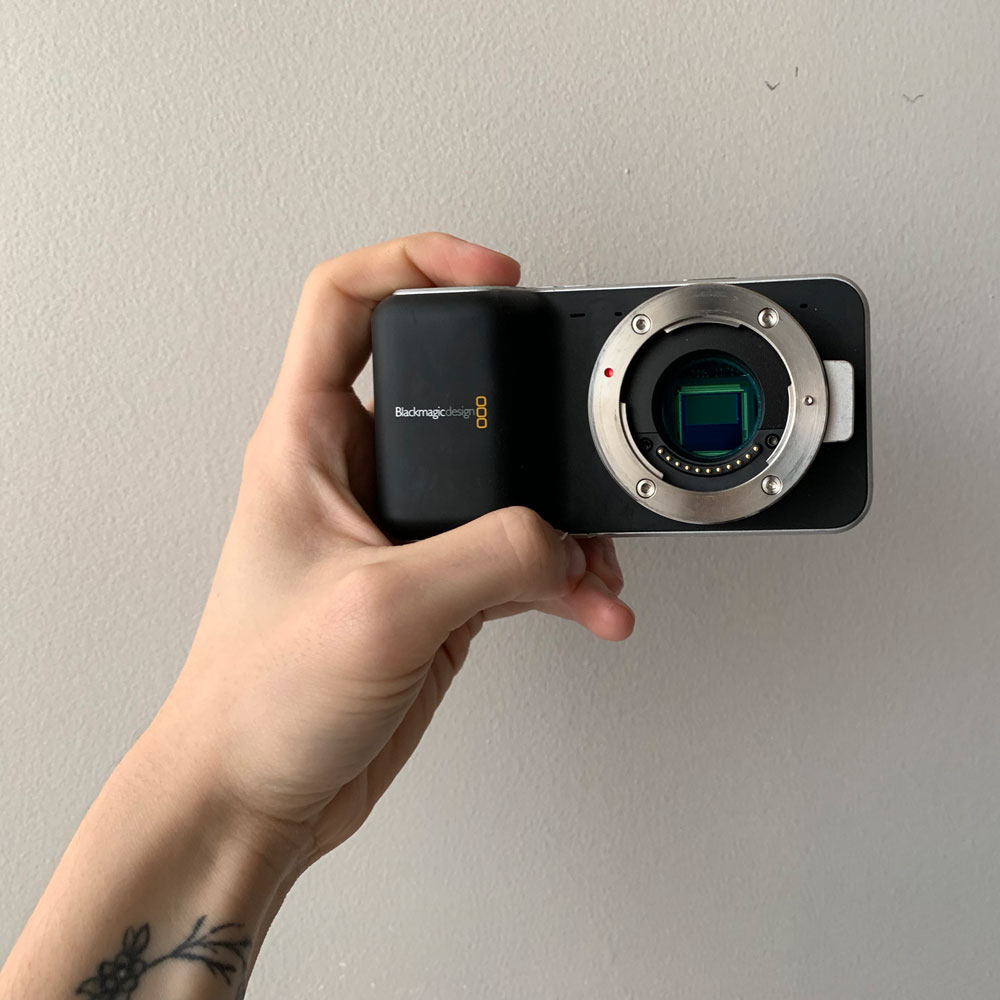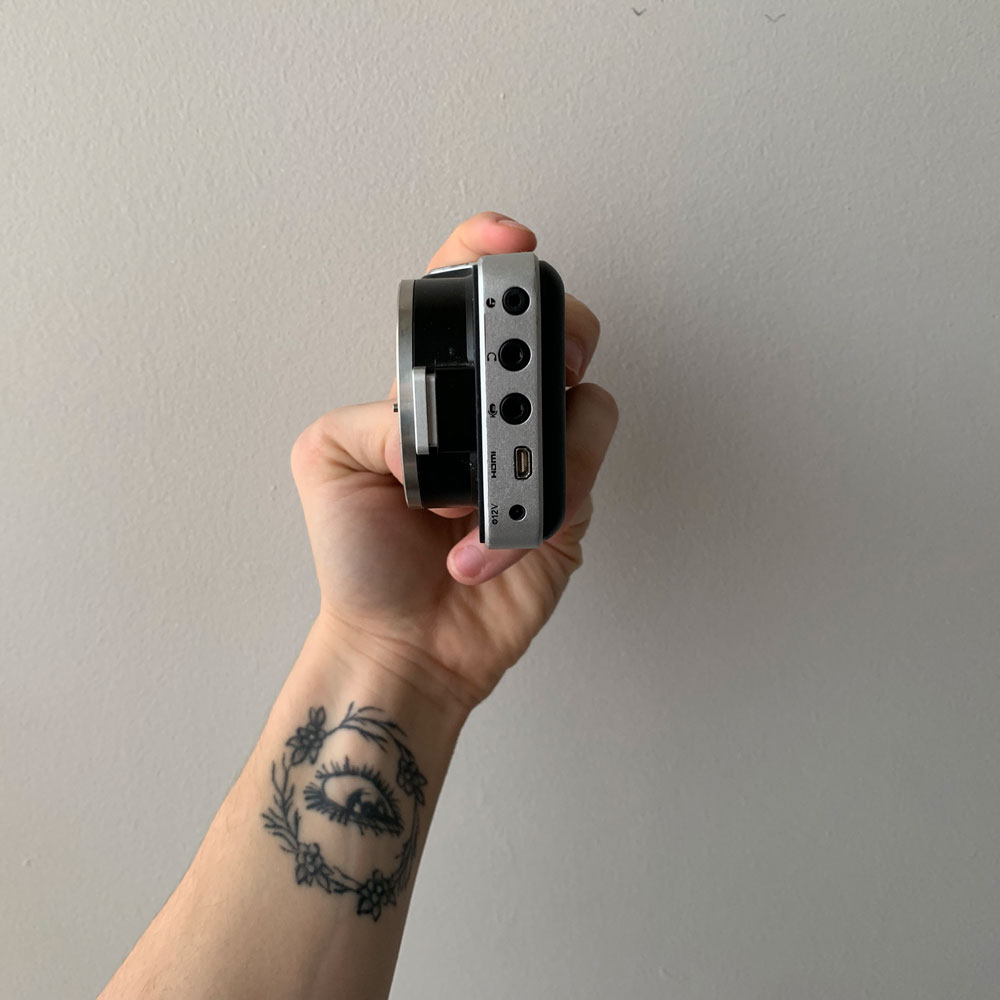Black Magic Pocket Cinema Camera (BMPCC) Review: You Need This $500 Camera in 2020
With so much buzz around the BMPCC 4K – and deservedly so! – the original BMPCC has gotten left in the dust. Now’s the perfect time to snatch your own.
No big surprise there, it was always a black sheep: this finicky camera shoots at 1080p 30fps max, dies in about 10 minutes – and forget about bumping the ISO over 1600.
But don’t let that distract you. This camera is a criminal steal at under $500 dollars: ultra-lightweight, RAW and ProRes with 12-bit log (that feels more like a 16-bit latitude in post), and a color science many colorists prefer to the new BMPCC 4K.
And with recent advancements in Davinci Resolve's upscaling algorithms, the Black Magic Pocket Cinema Camera’s 1080p footage can actually sit comfortably in a 4K timeline. Read on – I’ll prove it.
Full disclaimer – I’m a professional photographer, but my video expertise is limited to only a few pro shoots. This review is based on my personal experience – so feel free to leave any technical corrections in the comments if needed!
BMPCC Tech Specs
Records RAW and ProRes to SD cards
LANC/Remote, Haadphone, Micropjhone, HDMI Type-D, and 12V DC Power jack
1080p @ 23.98p, 24p, 25p, 29.97p, 30p
13 stops of dynamic range
ISO 200-1600 (native 800)
3.5 LCD
And oh yeah – it’s pocket-sized (128mm x 66mm x 38mm)
Who is the BMPCC For?
Conventionally, this camera is ideal for a controlled setting – something with set light values, art direction, blocking, stabilization, etc. This camera has even been used on blockbuster film sets like “The Avengers: Age of Ultron” because the quality is indeed that good.
The BMPCC is for videographers who want a classic, cinematic, filmic, expensive look. It’s for videographers who are happy to utilize the massive latitude in post to grade carefully and not just slap on a LUT.
But with such massive, rich files and a max ISO of 1600, it’s certainly not a vlogging camera. And without IBIS, a flip-out screen, or autofocus, it’s a bit annoying as a run-and-gun camera for casual shoots.
But I’ve used my Black Magic Pocket Cinema Camera to shoot interviews, talking heads, home movies, travel videos, performance videos, BTS videos, Youtube videos, Instagram content, and more. For me, the relatively small size makes it a serviceable travel camera. I use a battery plate as a solution for the terrible battery life and can shoot for hours without concern.
If you can’t stomach the harsh, crunchy, over-sharpened ‘digital look’ of most DSLR and mirrorless video cameras, here’s your solution. The BMPCC truly shoots like a cinema film camera.
Can the BMPCC shoot 4k?
Unfortunately not. The BMPCC’s sensor maxes out at 1080p. But before you click off the page – there’s a workaround.
DaVinci Resolve’s new “Super Scale” feature leverages an insanely powerful upscaling algorithm to intelligently scale your footage – and yes, your export time is going to be nuts – up to a factor of 8X. You can also control sharpening and noise handling.
Here’s what upscaled 1080p 30fps footage from the BMPCC looks like on a 4K timeline.
Pretty sharp if you ask me.
Can the BMPCC shoot slow-mo?
Define slow-mo.
Realistically, not really. But you aren’t stuck at 24fps, at least. If you’re just aiming for a cinematic look, 30fps is more powerful than a lot of videographers realize.
But if buttery smooth slow-mo like the stuff you see on popular vlogger’s b-roll is important to you, there’s no getting around it: you’ll need to spring for the BMPCC 4K instead!
Can the BMPCC shoot in low light?
Sort of! From a noise perspective, the BMPCC does better when scaling back highlights instead of boosting shadows.
The low light performance isn’t necessarily bad in a vacuum, but in a world of Sony A7R’s, there’s simply no comparison. The BMPCC is a camera that craves intentional and decisive light. In most cases, you don’t want to bump up your ISO past 1600.
That said, I shot the b-roll of this performance for Allie X at 1600 ISO with nothing but one skylight in the late afternoon, and the quality held up great.
Is the BMPCC a good vlogging camera?
Absolutely not. The BMPCC is firmly not a good choice for vlogging camera. No autofocus, no IBIS, no flip out screen, max ISO of 1600, and beefy file sizes that require grading make this camera far more pain than its worth if your intention is a quick vlog to throw up on Youtube. This is a cinema camera – and it should be treated as such.
Should You Buy the BMPCC or the BMPCC 4K?
Here’s the thing – if you can, you should buy both. They’re actually perfect complements to each other.
It goes without saying that the BMPCC 4K serves as an powerful A-Cam: powerful low light capabilities, gorgeous 60fps 4K, and versatile latitude in post with ProRes or RAW. But here’s why the BMPCC shines as the B-Cam in this setup.
The BMPCC’s image quality and color science is uniquely similar to the the BMPCC 4K, meaning you’ll have an easier time grading identically between the two cameras. It’s also dead cheap. And with DaVince Resolve’s Super Scale, you’ll be able to seamlessly fold the 1080p footage into your timeline.
But if you only have the budget for one, here’s how you can decide:
Is flawless 4K, slow-mo, and improved low light performance worth an additional $1000 to you? Truthfully, if you have the money, there’s no reason not to go for the BMPCC 4k. It’s simply a more powerful camera at a bizarrely low price point.
But if your budget is tight, and you can get away with a max of 30fps and ISO 1600, the BMPCC is the easy choice. It’s dirt cheap, and it’s powerful. Plus, according to many colorists on the web, the original color science is second to none.
Is the BMPCC Worth it in 2020?
There’s usually not a definitive answer to questions like this, but in this case: if you shoot video for anything other than vlogging, then yes, it is.
Here’s what it comes down to.
The BMPCC has the sensor technology of a camera four times its price. Accessories and rig prices are also free-falling as people move on to the BMPCC 4K. With a bit of patience, you might find a BMPCC body, cage, battery pack, monitor, and speed booster for under $1200 all included.
Note – you’ll definitely need a ND and IR cut filter if you’re looking to take your videography seriously. Read our rundown of the best ND filters for video here.









